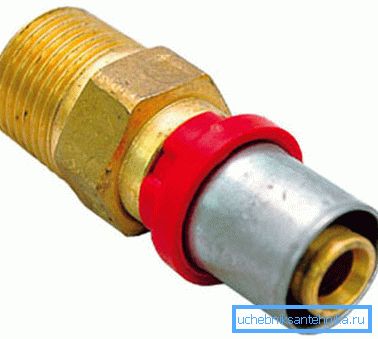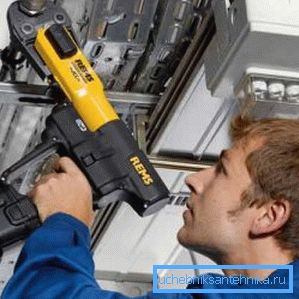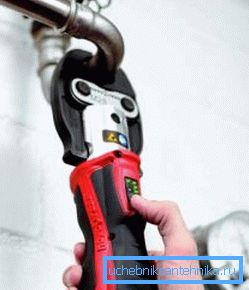When you need a press for pipes - familiarity with the tool
If you decide to independently install the pipeline system in your home, then in addition to choosing the necessary materials, you also need to pick up tools. You may need a wrench, scissors, and a special press. If everything is more or less clear about the first two tools, then, as for the latter, questions arise here. In this article we will take a closer look at why this tool is needed, and how to use it.

Press tongs and their features
The aforementioned tool is a kind of device, equipped with a drive, which forces the press tongs to work.
To date, there are such types of presses as:
- Manual. It is a device that includes a press head and telescopic handles. The clamping force can be adjusted as a set of telescopic handles, and the head of the press.
- Electrically driven. In cases where it is not possible to make connections using a hand tool, use the electro-hydraulic option. The compounds obtained using this type of press have the following characteristics:

- Resistance to all sorts of vibrations.
- Resistant to water hammer.
- Do not allow twisting and bending.
- Endurance to temperature effects.
In what cases use press tongs
Connection of metal-plastic pipes occurs with the help of such a detail as a fitting.
They can be divided into the following types:
- Threaded. This fitting connects metal pipes using a split ring having a tightening nut. Such a connection is rarely reliable because it can have significant errors in the installation process.
- Press fitting. This part is a design where there is a fitting, o-rings, insulation rings and crimping sleeve. The connection is ensured by tight compression of the fitting on the pipe.

Thus, to install the fitting, you need a special clamping tool, namely a press for plastic pipes. Professionals advise to make connections in this way, as they are durable and reliable.
Important advantages of connections using press fittings include:
- The possibility of their complete isolation. They can be applied to a water heat-insulated floor when pipes need to be filled in in concrete.
- No further maintenance of such connections is required.
- Capable of withstanding a pressure of 10 bar.
- Easily and quickly mounted, the work can be done by hand.
- The guarantee of strength and durability of compounds for at least half a century.
Types of pipes suitable for pressing crimpers
Connections using press fittings are designed for pressing the following pipelines:
- Stainless steel pipes.
- Metal pipes.
- Polymer pipes
- Copper piping products.
- Pipes from the sewed polyethylene (PEX).
How to choose a press tool
Currently presents a huge number of different presses. There are tools based on electromechanical or hydraulic principles. But the price of such units is quite high, so it is not reasonable to buy such a tool for single use.

But hand presses are the best suited for independent rare work. In addition, the quality of the connections is not inferior to that made by a professional device.
Note! Avoid buying press tools from questionable sellers. Only buying from an authorized dealer or a specialized store can guarantee the efficiency and availability of the device.
To choose a hand tool you need to be guided by the diameter of the pipe that you will be mounting. All clamping tools are designed for different pipe sizes, so make no mistake with the dimensions.
Often the press tool for metal pipes is equipped with a set of special removable liners with which you can work with pipes of different diameters.
Also, some tools are equipped with an optimization system:

- The APS system - distributes the applied efforts depending on the size of the fittings.
- The APC system automatically controls the pressing of pipe fittings. The opening of the press occurs only after the completion of the clamp.
- The OPS system is equipped with locks to increase the load.
How to use press tongs
Proper use of this tool will help you detailed instructions attached to each product.
We connect pipes by means of a press
- The inner chamfer is removed from the cut end of the pipe. To give and preserve the shape of the product, a calibration part is inserted into it.
- Crimp sleeve fitted.
Tip! It is strictly necessary to press the clutch with a press-on clamp; it is forbidden to re-crimp!
- Next, the calibrated pipe is equipped with a fitting on which the sealing rubber rings are put on. A dielectric gasket is installed in the place where the end of the pipe and the connecting part are in contact.

- For crimping couplings use a press for plastic pipes with different liners. After the part is crimped, we get an arcuate metal connection with two annular bands.
Conclusion
We hope that the above information will help you not only to determine the choice of hand tools, but also to understand how to use, and in what cases it is needed. Of course, ticks are not the first necessity, but you should not forget about them, especially in cases when metal-plastic sewage is laid.
In the presented video in this article you will find additional information on this topic.